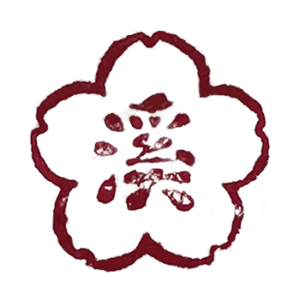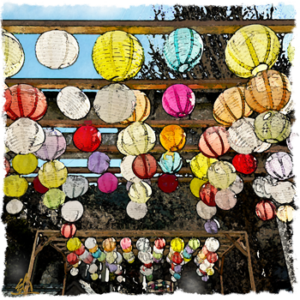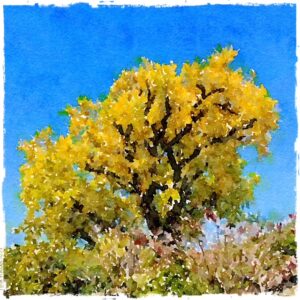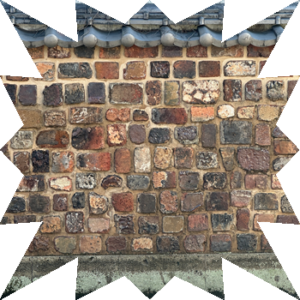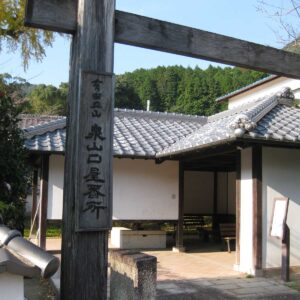
泉山口屋番所の由来について
江戸時代、 佐賀藩は皿山 (窯業地) を管理するために皿山代官所を設置した。
山本神右衛門が初代皿山代官として任命されたのは正保4年 (1647) 12月のことである。
そして、皿山代官所の組織下である口屋番所の設置時期については不明であるが、江戸中期の文献によると口屋番所は「泉山口、 岩谷川内口、広瀬山、 市ノ瀬山、 嬉野口」の5ヶ所に設置されており、 足軽が1名ずつ配れていたという。
その主な任務は皿山における人と物の動きの監視であった。 特に泉山口と岩谷川内口は有田皿山の中心地である内山地区の東西の出入口に位置しており、有田焼の技術の漏洩、原料 (泉山陶石) や製品の不正取引に目を光らせていた。 そして、その建物の姿は幕末の絵図 「松浦郡有田郷図」 (安政6年1859) にも描かれており、それによると、ここがその位置にあたる。
IZUMIYAMA KUCHIYA BANSHO
This place was the site of the Izumiyama Kuchiya Bansho, a guardhouse. In the Edo period (1615-1867), the Saga clan, a feudal clan which ruled the Saga district, set up the Sarayama Daikansho, the deputy governor’s office, to control the Arita Sarayama which was the location of the ceramic industry in the Arita district. The Kuchuya Bansho which was organized by the Sarayama Daikansho existed in the five places of Izumiyama, Iwayagōchi, Hiroseyama, Ihcinoseyama and Ureshinoguchi. An Ashigaru, a ‘samurai’, was posted at each of the Kuchiya Bansho.
The main purpose of the Kuchiya Bansho was to watch the movement of people and things in the Arita Sarayama The Izumiyama Kuchiya Bansho was located at the eastern entrance of the Uchiyama which was the center of the Arita Sarayama, and the Iwayagochi Kuchiya Bansho at the western entrance.
Both offices were especially watchful to prevent leakage, of the technique for Arita porcelain production. They kept a watchful eye on the trading of kaolin rocks from Izumiyama which were the raw mate lar for porcelain, and also the finished porcelain merchandise to prevent a black market from forming.

